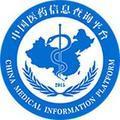

- Dengue Fever:
- Causes: It is caused by the dengue virus, which is transmitted by Aedes mosquitoes. These mosquitoes are active during the day, especially in the early morning and late afternoon.
- Symptoms: Patients usually experience sudden high fever, often reaching 40°C within 24 hours, accompanied by severe headaches, pain behind the eyes, joint and muscle aches, fatigue, and a rash that may appear around the third to sixth day of illness. There can also be bleeding manifestations such as nosebleeds, gum bleeding, or petechiae.
- Influenza:
- Virus Types: Common influenza viruses include influenza A (such as H1N1, H3N2 subtypes) and influenza B. Influenza A viruses, especially certain subtypes like H1N1, can be highly contagious and cause more severe symptoms.
- Transmission and Symptoms: It spreads mainly through respiratory droplets. Symptoms include rapid - onset high fever, cough, sore throat, runny or stuffy nose, body aches, headache, fatigue, and in some cases, vomiting and diarrhea, especially in children.
- Norovirus Gastroenteritis:
- Transmission Route: Norovirus is a common cause of acute gastroenteritis. It spreads easily through contaminated food and water, as well as person - to - person contact. In crowded places like schools or dormitories, it can quickly lead to outbreaks.
- Symptoms: Affected individuals often experience sudden onset of nausea, vomiting, diarrhea, abdominal pain, and may also have low - grade fever, headache, and muscle aches.
如果您对这些传染病的预防措施、诊断方法等内容感兴趣,我可以为您进一步拓展相关信息,让您更全面地了解如何应对这些疾病。

